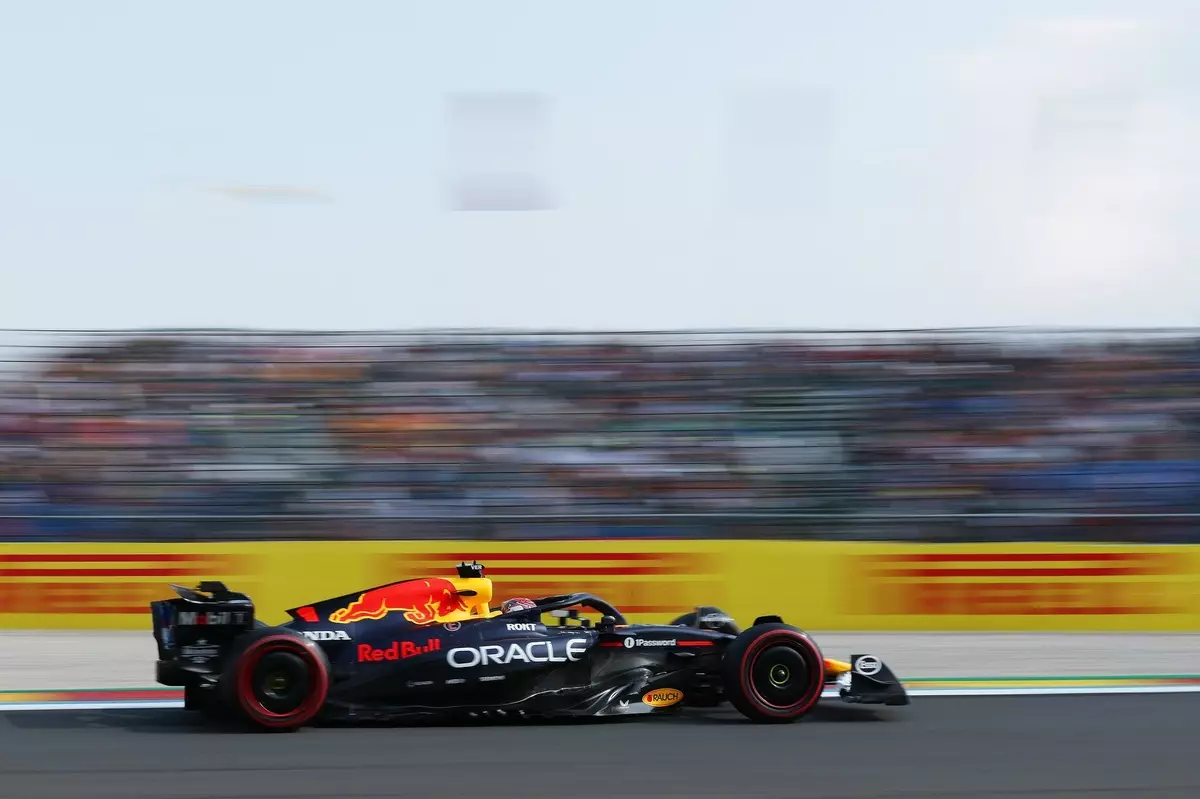The qualifying session for the Belgian Grand Prix revealed a stark contrast in performance levels across teams, exposing both the promise and limitations of modern Formula 1 engineering. While McLaren dominated all three segments of qualifying, their drivers’ execution fluctuated, underscoring a crucial reality: having the fastest car on paper does not automatically guarantee front-row qualifications. Oscar Piastri’s narrow escape into the final segment exemplifies a driver’s resilience amidst technical and strategic hurdles, but the real story lies in the unyielding gap that separates the top contenders from the rest.
Max Verstappen’s performance, while respectable, highlighted Red Bull’s ongoing struggle to match McLaren’s raw speed, especially in sectors demanding high downforce and top-end velocity. Despite mounting upgrades designed to fine-tune the car’s aerodynamics and powertrain, Verstappen faced a glaring deficit—nearly half a second behind Piastri. This differential, especially the more than 0.39 seconds lost in the twisty Fagnes and Stavelot corners, paints a picture of a team caught in the delicate balancing act between speed and grip.
The Downforce Dilemma: Speed Versus Stability
One of the most intriguing aspects of this qualifying session was Red Bull’s ongoing struggle to optimize its downforce levels without sacrificing straight-line speed. Helmut Marko’s candid insights shed light on the fundamental trade-offs faced by F1 engineers: increase downforce to enhance cornering capabilities, but potentially lose precious seconds on straights. With Verstappen’s top speed hitting 345.3 km/h compared to Piastri’s 341.4 km/h, it’s evident that even the most sophisticated aerodynamic modifications aren’t enough to bridge the gap. Marko’s remarks reveal a team aware of incremental progress but still struggling to match the finesse displayed by McLaren’s drivers, especially Piastri.
Adding to the complexity is the individual brilliance of Piastri. His ability to extract maximum performance from the McLaren in each sector is remarkable, and Marko admits that this isn’t just a Red Bull problem but a reflection of Piastri’s exceptional driving talent. If McLaren’s car continues to improve and Piastri maintains this trajectory, Verstappen’s chances of clinching pole position become increasingly slim. Verstappen’s dismissive comment about straight-line speed—implying that trailing by nearly five-tenths diminishes the value of speed in any one sector—further emphasizes the importance of holistic lap consistency over isolated speed advantages.
The Struggles of Yuki Tsunoda and the Road Ahead
While the spotlight remains on the top-tier battle, other drivers like Yuki Tsunoda are struggling to make meaningful progress. In every qualifying session since arriving at Red Bull, Tsunoda has been outqualified by Verstappen, and his failure to reach the final Q3/SQ3 round once again underscores a wider issue of competitiveness within the team. Falling six-tenths behind Verstappen and ending the session in 12th place, Tsunoda’s lack of the latest upgrades hampers his ability to challenge more established drivers.
Despite acknowledging room for improvement, Tsunoda’s situation appears troubling given the tight margins at this level. Marko’s cautious optimism about potential gains in the race suggests that outright qualifying prowess is still elusive for him, and the upcoming sprint race might not provide a breakthrough. This scenario highlights a broader truth in Formula 1: talent and consistency are vital, but without a car capable of extracting maximum performance, progress remains frustratingly out of reach.
Strategic Implications and the Unpredictability of Race Day
The qualifying results underscore a critical theme: the importance of strategic flexibility and race-day adaptation. As teams analyze these results, it becomes clear that Red Bull will need to rethink its approach, potentially balancing downforce sacrifices with the need for speed on the straights. The upcoming sprint race will serve as a testing ground for these theories, with smaller margins for error and high stakes.
McLaren’s demonstrated speed and consistency suggest that unless Red Bull can identify an optimal setup or improve outright performance, the battle for pole and race victory might tilt heavily in favor of the team with the most advanced aerodynamic package and driver execution. The gap in qualifying isn’t just about raw speed; it’s a microcosm of technological mastery, driver skill, and the delicate art of balancing competing priorities—a battle that defines the very essence of Formula 1 racing at its highest level.


Leave a Reply